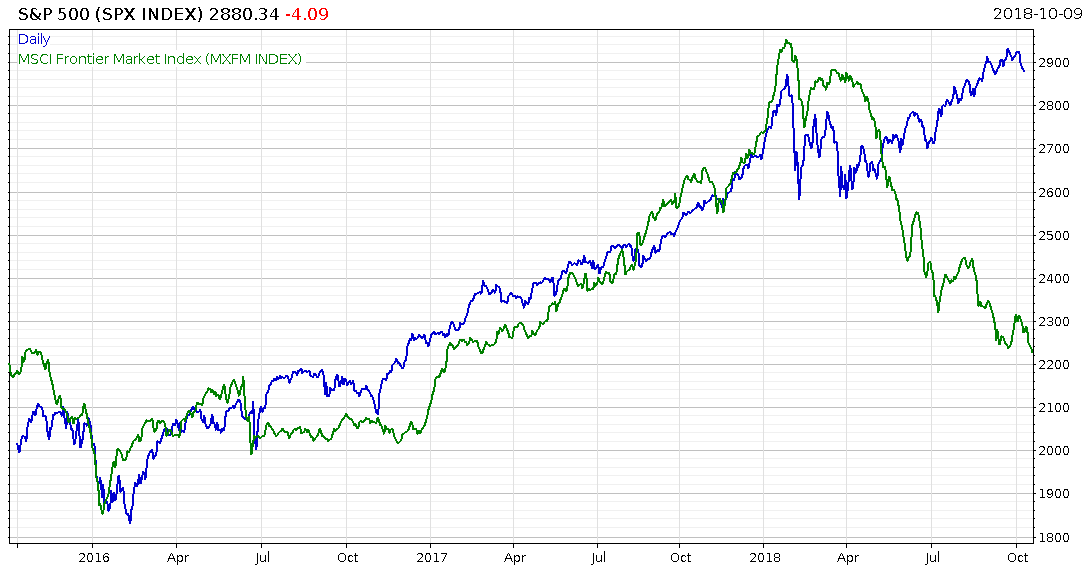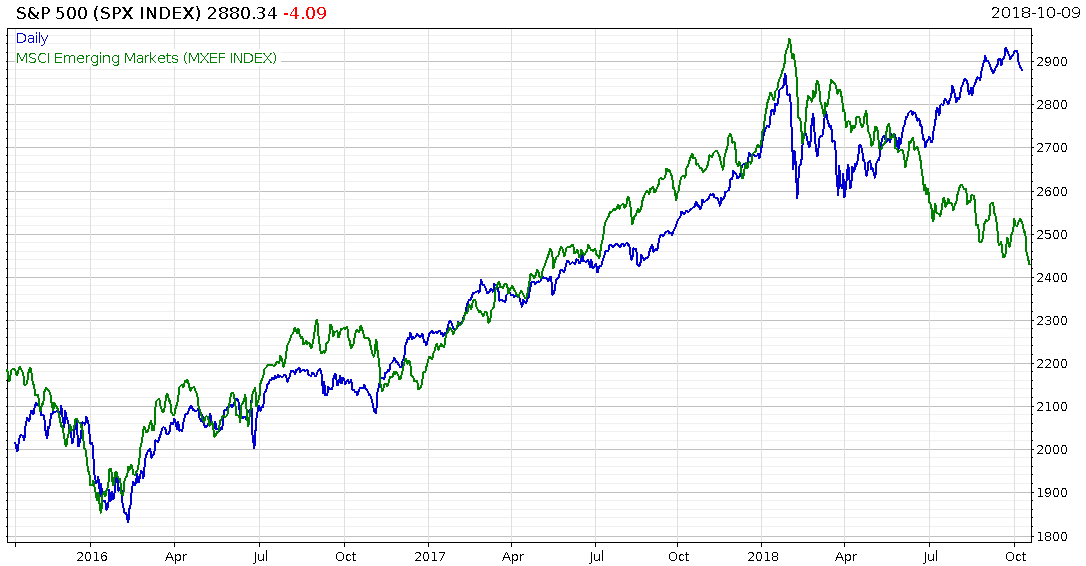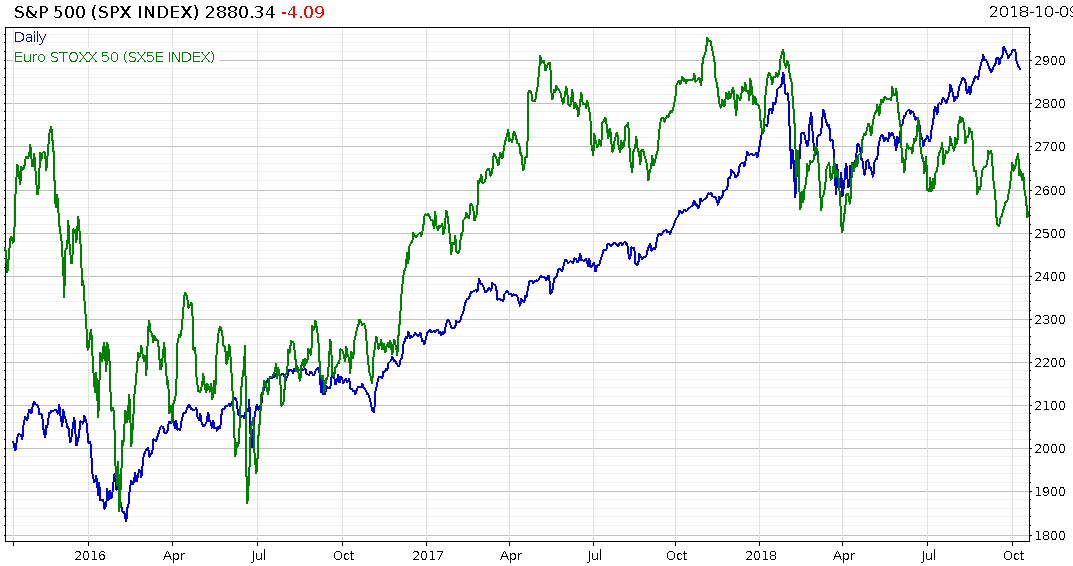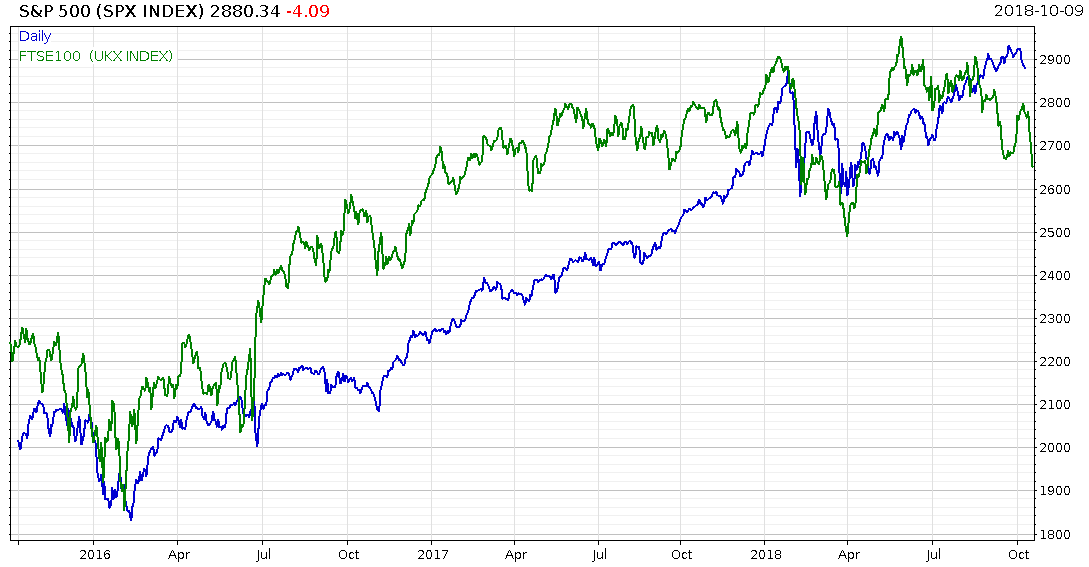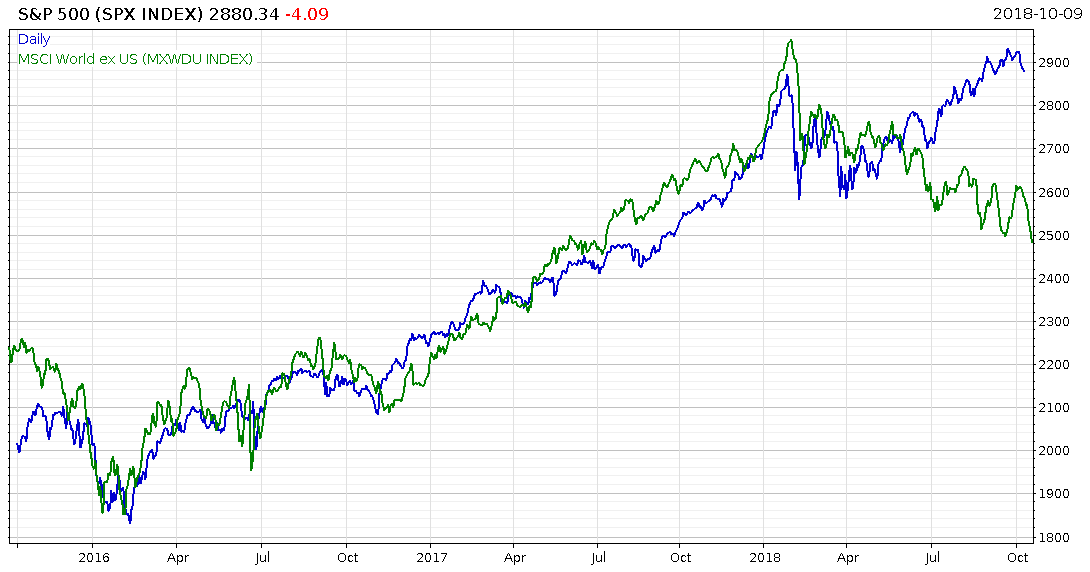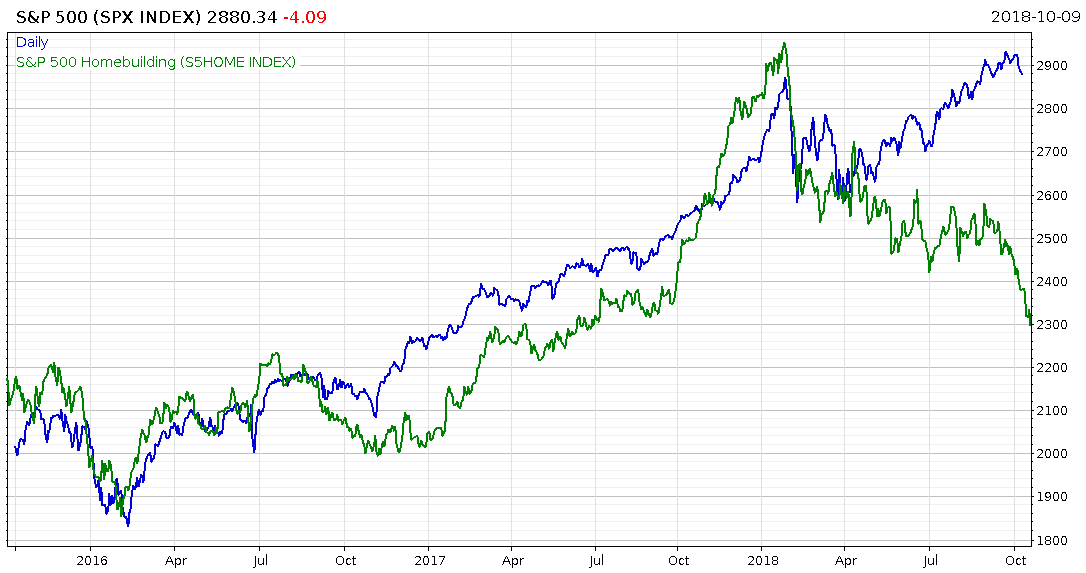The Lone Ranger has returned. Not in a reboot of the classic black and white western series, but in the US stockmarket.
A master of disguise, he now goes by the handle “S&P 500”. In his guise as the US blue-chip companies index, he’s no longer accompanied by his friend Tonto and a horse called Silver, but by the US dollar and the Federal Reserve. As the market narrative of “synchronised global economic expansion” falls apart, he rides alone into the sunset.
The Lone Ranger’s success is best illustrated on the frontier – his native element, after all. As you can see above, frontier markets were bested by the S&P (in blue) early in the year, and have yet to recover.
They’re not alone. Emerging markets, the grade above frontier, were similarly gunned down by the Lone Ranger in February:
This “decoupling” of the US stockmarket against others – the “jaws” opening on the top right-hand side of these charts – can be seen almost everywhere.
In Europe…
More recently here in Britain…
And can be witnessed on a global scale here, with the S&P relative to the rest of the world:
To understand just how lonely the Lone Ranger is, consider that he has triumphed not only against other countries and the world as a whole… but against his own economy!
US homebuilding companies, an indicator of the vitality of the US economy, were left behind by the Lone Ranger at the beginning of the year, and are declining steeply as he disappears into the horizon. This could be a reflection of rising interest rates, but this decline is very steep indeed.
One way of interpreting this incredible outperformance of American blue-chip companies against everything else in recent times is as a flight to safety as we reach the end of the business cycle. In this way, these charts are illustrating a transfusion of investors’ money out of what they consider risky (all the green lines) into what they think is safe (the S&P).
Charlie Morris used the metaphor of blood running from the market’s extremities to its heart in this week’s update for The Fleet Street Letter, commenting on the divergence between small- and large-cap US companies:
It might not look like much but the US large caps rose by 11% since April whereas the mid-caps only rose by 4%. Normally in a rally, you’d expect the smaller companies to do better. Not this time, and my conclusion is reduced liquidity as investors are seeking safety in the larger companies. It’s a bit like the blood flowing to the heart when the patient is cold.
Charlie maintains that we are late in the game, and has positioned his The Fleet Street Letter portfolios accordingly.
What will bring the Lone Ranger’s charge to a halt? If you’ve been reading this letter for a while, you’ll know our thoughts on the risks Italy poses to the global financial system. And just as the homebuilders are suffering from higher interest rates, if the Fed continues on its hiking cycle, something is bound to break with the level of debt accrued by US corporates since rates were slashed to zero.
But until then… it’s “Hi-Ho Silver! Away!”
All the best,

Boaz Shoshan
Editor, Southbank Investment Research
Category: Economics


